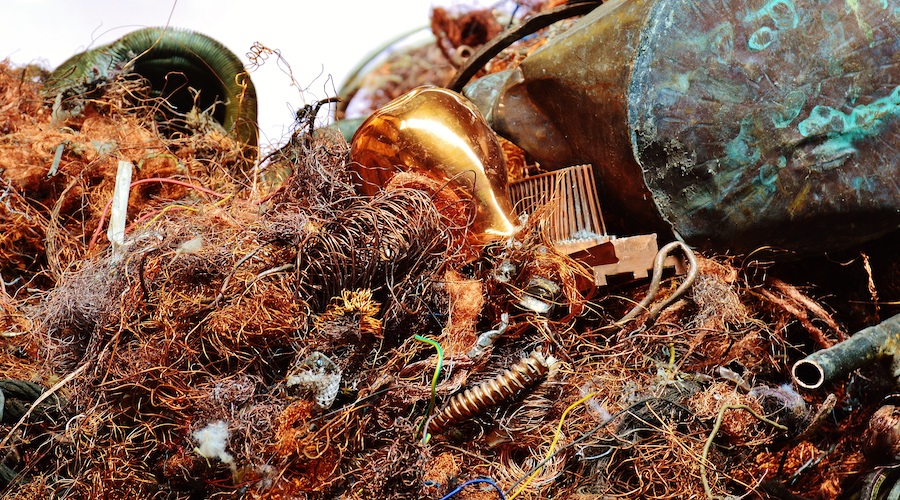“Smelting scrap metal for recycling also requires significantly less energy than the initial process of refining raw minerals into metals, meaning lower emissions,” the document reads, highlighting the fact that the aluminum and steel industries are alone estimated to contribute 2% and 7% respectively of all global CO2 emissions.
White & Case’s report also points out that the shake-up of global supply chains by covid-19 and geopolitical conflicts has also shone a light on the downsides of interdependencies, leading countries to look inward for sources of commodities, including the potential uses for scrap.
Strong demand
Data collected by the New York-based firm show that global demand for scrap metal is expected to remain strong over the coming years, owing to increasing demand for metals across a range of industries, such as automotive and construction, as well as ESG considerations that favour the use of recycled materials to reduce carbon emissions.
“For instance, the European aluminum industry in its Circular Aluminum Action Plan has established a target to satisfy 50% of EU demand for aluminum using recycled materials by 2030, compared to the current level of 36%,” the paper reads. “Given the strong demand for scrap metal and its importance for metals production, several countries have sought to reserve their domestic scrap supplies for their own metals processing industries, including by taxing or prohibiting the exportation of scrap metal.”
White & Case’s research indicates that approximately 40% of globally traded copper waste and scrap, 30% of aluminum and 20% of iron and steel waste and scrap are subject to some form of export restriction.
The document says that the downside of these restrictions is that as they increase the domestic supply of raw materials and, thus, reduce their cost, some trade authorities consider that they confer unfair benefits to downstream users of such raw materials. This has led to the imposition of countervailing duties on imports of the downstream products.
“Whereas export restrictions on scrap metal are relatively common, few countries impose significant import restrictions on scrap metals. Apart from China, few countries have imposed import prohibitions or quotas on scrap metal, and applied most-favored nation (MFN) tariff rates on scrap metal are relatively low (averaging 3.1 percent for aluminum scrap, 3.1 percent for iron and steel scrap, and 3.3 percent for copper scrap),” the report states. “Scrap metals have rarely been the target of trade remedy measures (i.e., antidumping, countervailing duty and safeguard measures), and are exempt from tariffs the US has imposed on steel and aluminum imports on national security grounds.”
Big challenges still need to be addressed
In most countries, the smelting of metal from scrap continues to be dependent on fossil fuels, particularly coal or natural gas.
Even if the process requires significantly less energy than creating metals from raw materials, White & Case’s study states that consumers are increasingly looking at metal products that have been manufactured in greener ways.
Electrification of the smelting process and/or the substitution of gas for hydrogen are on top of mind for consumers but certain obstacles need to be overcome first so that such a process is more widely used.
“While smelting using electricity or hydrogen has the attraction of not emitting at source (i.e., Scope 1 emissions), there is still the question of how the electricity and hydrogen have been sourced (i.e., Scope 2 emissions),” the dossier reads. “While the trend toward electrification is growing, and sources of green energy are increasing, the majority of power available on the grid in most countries continues to be sourced from fossil fuels. Green hydrogen is also not yet widely available.”
In the view of the experts at the American firm, though not yet widely available, projects being designed today may wish to design for the inclusion of hydrogen, on the expectation that green hydrogen will become commercially available in the near term.
“As consumers of metals products scrutinize the provenance of the metals in their products, it remains to be seen whether the market will distinguish between the ESG credentials of the scrap actually used in the recycling process,” the paper notes. “With the market currently placing a limited price premium on green metals (as certified by current guidelines), it remains to be seen whether the market will recognize, and be prepared to pay an additional premium for recycled metals that have had a completely green life cycle.”
For the analysts at White & Case, even if consumers are willing to pay such a premium, as minerals/metals are mixed during the various stages of the mining, refining and recycling process, tracing and verifying a clear provenance of recycled metals will be impractical and difficult.
